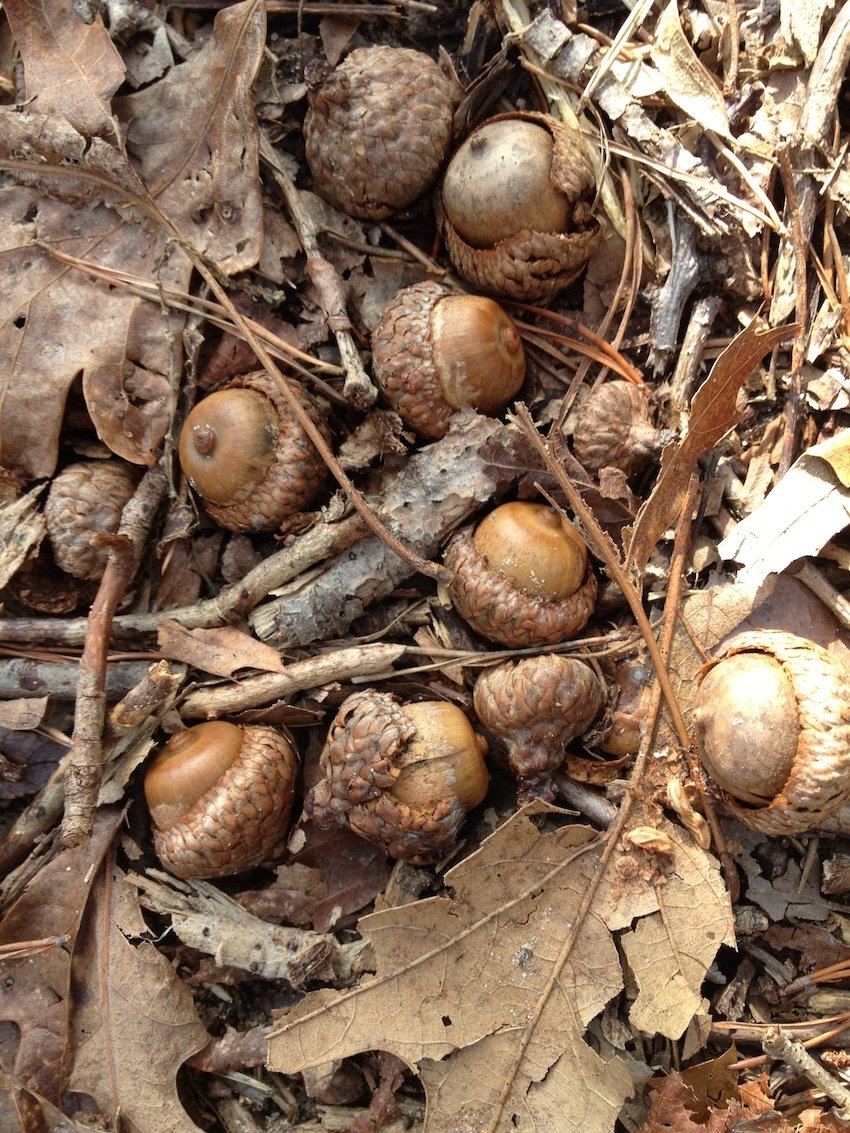Mast Counts in Old-Growth Forests . . . And Beyond!
By Mid-Atlantic Regional Manager, Brian Kane
At the June dedication of the Curtis Gates Lloyd Wildlife Management Area old-growth forest in Grant County, Kentucky, the Kentucky Fish and Wildlife Resources staff toured the newly initiated forest. This highly mature varied oak-hickory forest traversed gently sloping terrain, dipped into stream valleys as well as upland areas. A trail system is a rare occurrence in a wildlife management area, and fortunately for OGFN, the Curtis-Lloyd old-growth forest has a wonderful 1.1 mile loop that is enjoyed by residents and visitors in the northern Kentucky region.
On the hike after the OGFN induction ceremony, Kentucky Fish and Wildlife Regional Coordinator Wes Little shared insights with hikers about the “mast count’ that will be ongoing this year. A forest mast count is the count of the fruits or nuts produced by trees in a forest during a mast year. A mast year is the season in which the trees - here largely oaks and hickories – produce fruit or nuts. (My research let told me that the term "mast" is an Old English word mæst that is the term to describe the ground covered with fruits and nuts of trees).
Heavy mast years are important events in nature because they benefit both wildlife and the trees. Wildlife benefits from the abundance of food available, which can affect the rate of reproduction and their abundance in the forest. Large amounts of dropped nuts and fruit also can lead to the germination of more of the tree species in the forest and allow the species to proliferate.
For the management team at Curtis Lloyd, the mast counts occur by using high-powered binoculars and looking up at the largest trees in the forest and literally counting! This is a process that requires great patience (and good eyesight!). In Kentucky, each of its WMA’s perform mast counts 25 white oak, 25 red oak, 25 hickory, and if available, 25 beech trees, documenting the production of the same trees each year. These counts give managers important information to direct their work.
The counts take about one to two days per site to complete, and the data is sent to the Small Game Program of the Kentucky Fish and Wildlife Resources team. A statewide report is produced each year and can be found at https://fw.ky.gov/Pages/search.aspx?terms=mast+counts&affiliateId=FW.
So why are these numbers important for us to know? For wildlife managers, the quantity of nuts produced each year often provides an indicator or predictor for harvest of deer, turkey and squirrel in that same year. It can also help assess the continuity of the forest or assess forest health within a given stand of trees. In areas with deer densities that exceed carrying capacity, you can often see the “browse line”, in which the deer completely devour seedlings and other herbaceous plants that grow in the understory of a forest.
Attendees at the ceremony greatly appreciate the Kentucky Fish and Wildlife Resource team’s lesson on the mast count, and enjoyed about another practice undertaken by the men and women who manage forested wildlife areas.
The Old-Growth Forest Network thanks Wes Little, Kentucky Department of Fish and Wildlife Resources, for his contributions to this post.



